What is Mentaiko Udon?
Mentaiko udon (明太子うどん) is a noodle dish made with udon, a thick Japanese noodle made with wheat flour, and spicy cod roe we call “mentaiko”. Mentaiko is a seafood ingredient made by marinating pollock roes in salt and adding chili peppers.
Originally from Korea, mentaiko was introduced to Japan and has been modified to suit Japanese tastes, for example, by reducing the spiciness. In Japan, Hakata in Fukuoka Prefecture is most famous for its mentaiko.

There are actually three different types of mentaiko udon:
- Mentaiko kamatama udon (明太子釜玉うどん) – where cooked udon noodles are mixed with raw egg and mentaiko.
- Mentaiko udon (明太子うどん) – where cooked udon noodles are mixed with mentaiko, butter and shirodashi (a concentrated soup base made with light soy sauce and dashi). Sometimes cream is added to make it more like a pasta sauce similar to mentaiko pasta.
- Mentaiko ankake udon (明太子あんかけうどん) – where the cooked udon noodles are served in a thick dashi stock and flavored with mentaiko.
The ankake udon soup introduced here is characterized by a thick and gentle taste with egg, and is very easy to eat! My recipe is inspired by the mentaiko udon served at a high-end Japanese udon restaurant called “Tsurutontan“, which also has several locations in the United States.

Visual Walkthrough & Tips
Here are my step-by-step instructions for how to make Mentaiko Udon at home. For ingredient quantities and simplified instructions, scroll down for the Printable Recipe Card below.
Mentaiko is sold in sacs, so make a horizontal incision with a sharp knife, open it up and scoop out the roe using a spoon. Set aside about 1 tbsp of mentaiko per portion for garnish at the end.
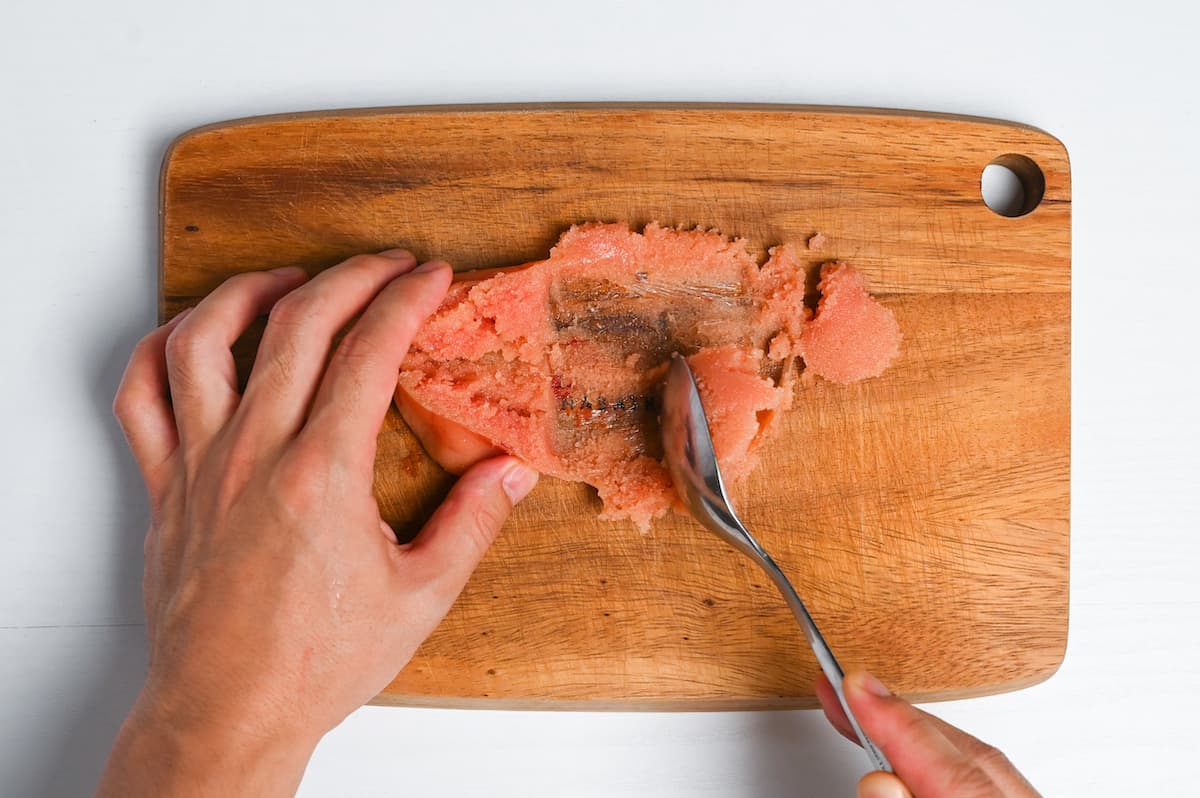
Whisk the egg in a bowl, then add the mentaiko and mix well.
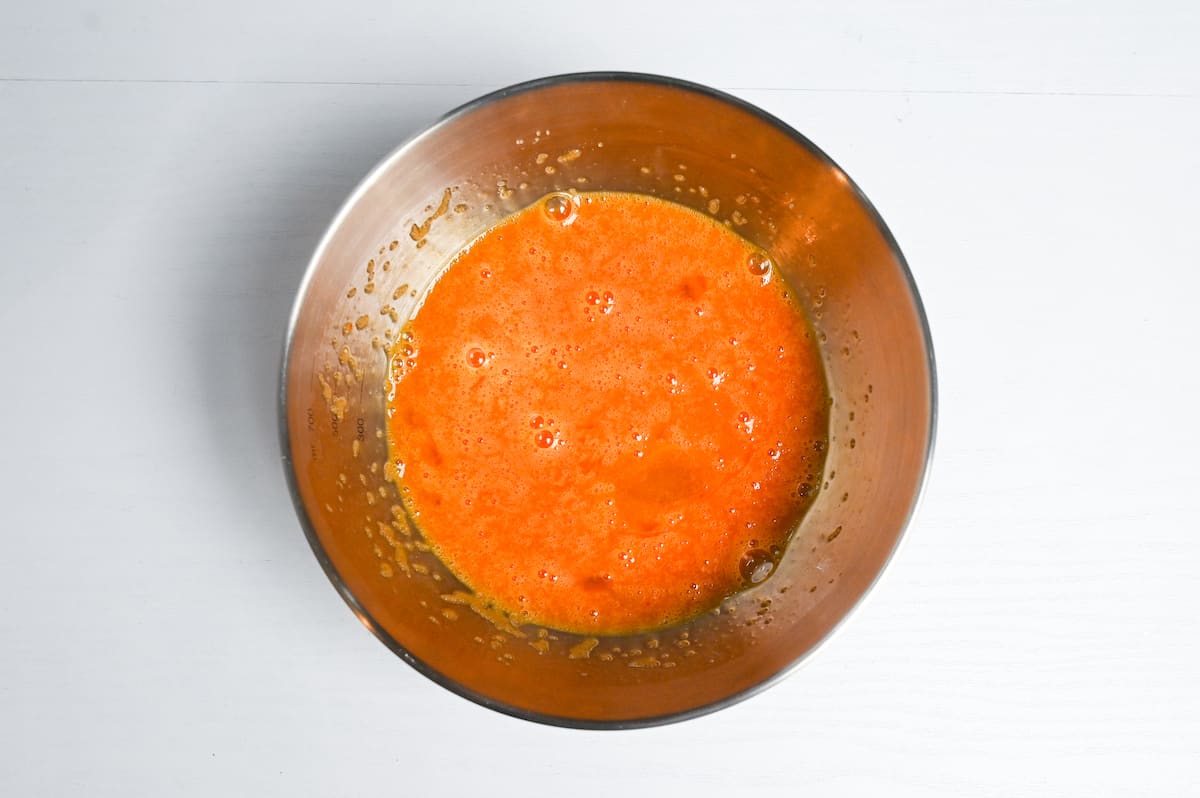
Add the dashi, sake, mirin, sugar, light soy sauce and salt to a saucepan and bring to a boil over a medium heat.
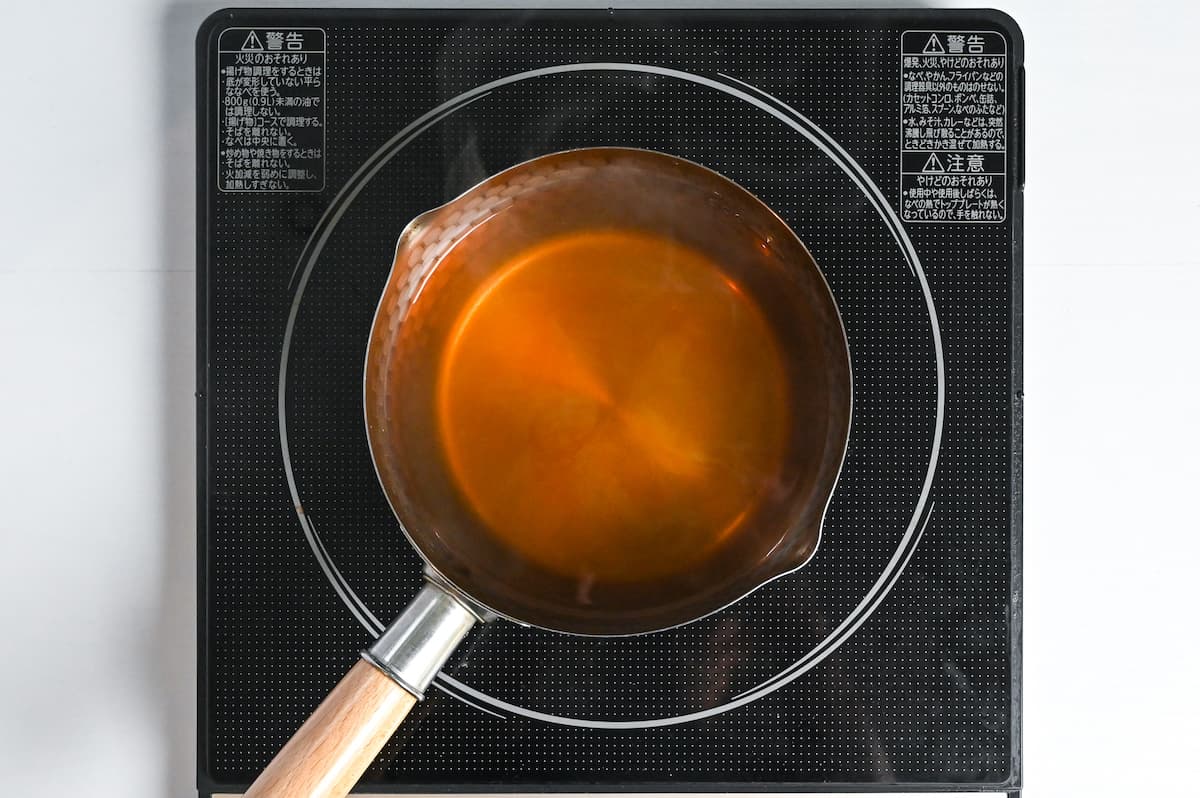
While you’re waiting for the broth to boil, cook the udon noodles separately following the instructions on the packaging. Mix the potato starch and cold water in a small bowl to make a slurry. This will make the soup thick and glossy.
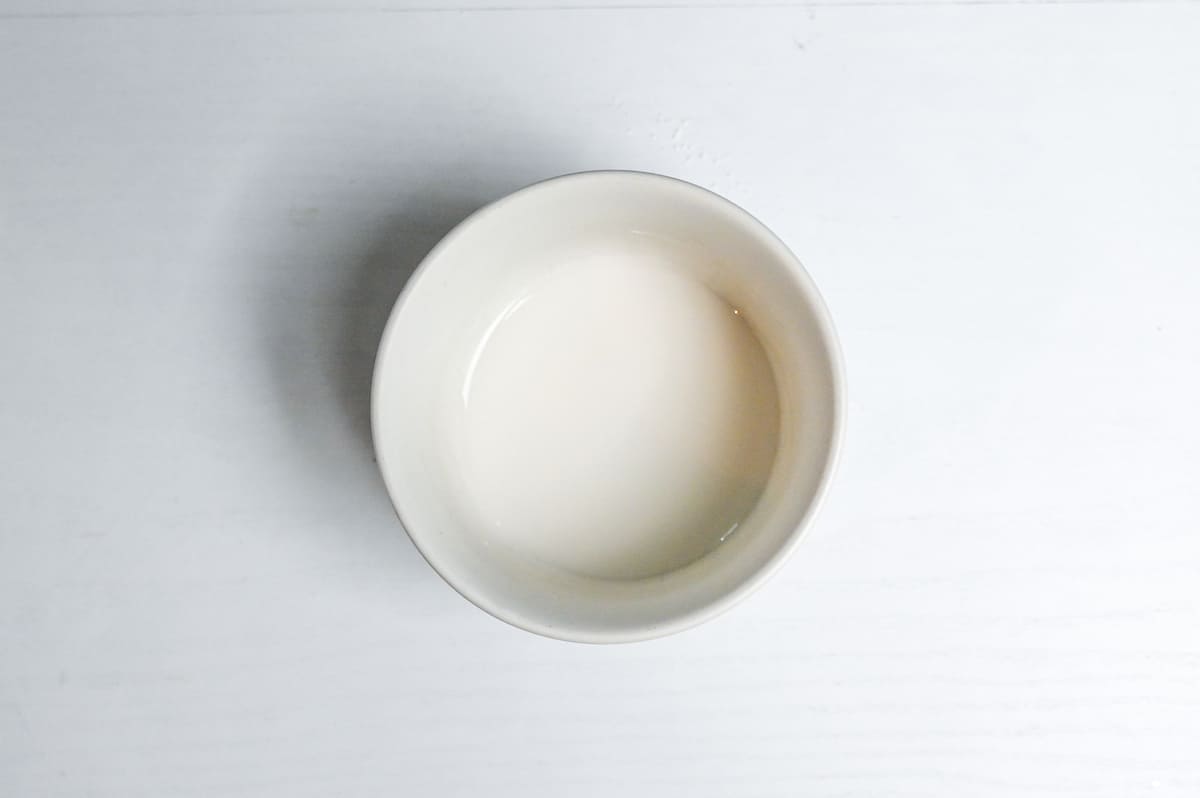
Making the slurry in a separate bowl will prevent lumps of potato starch in your broth!
Once the broth is boiling, turn the heat down to a simmer and add the slurry. Heat for a few minutes or until the broth has thickened slightly and then pour in the egg mixture.
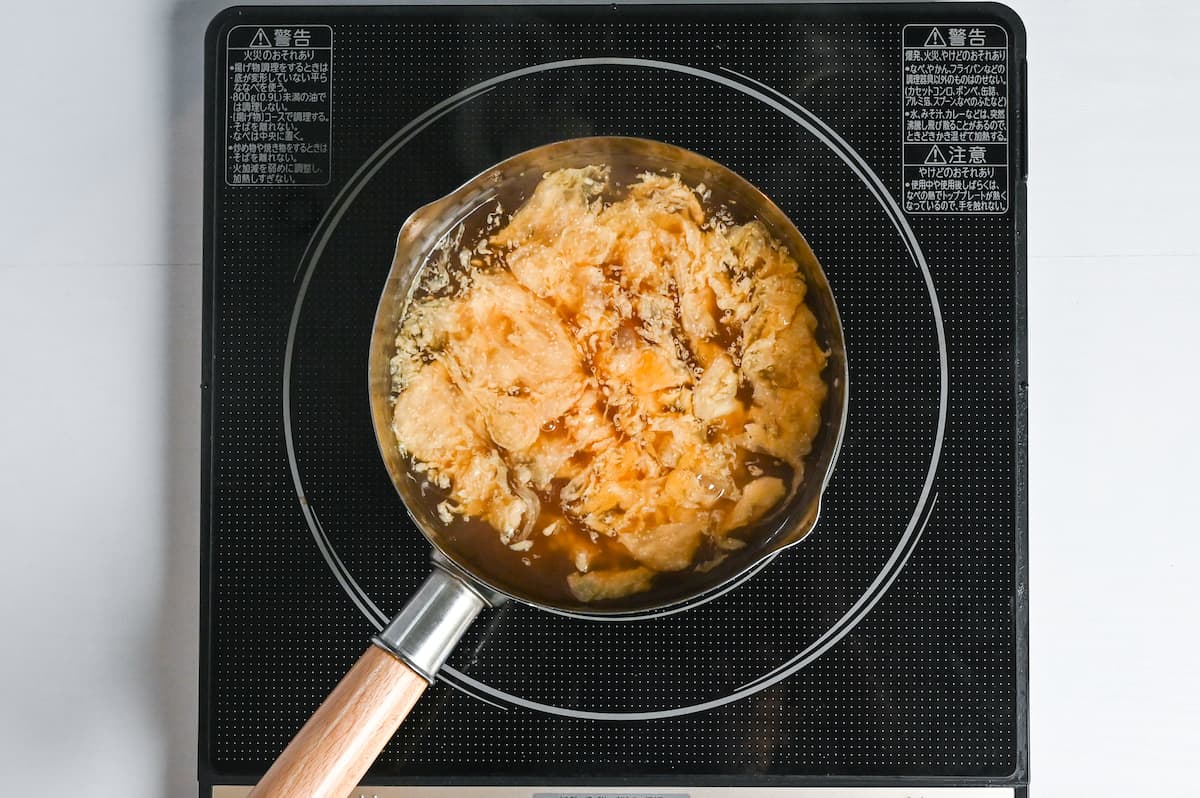
Simmer with a lid for 30 seconds.
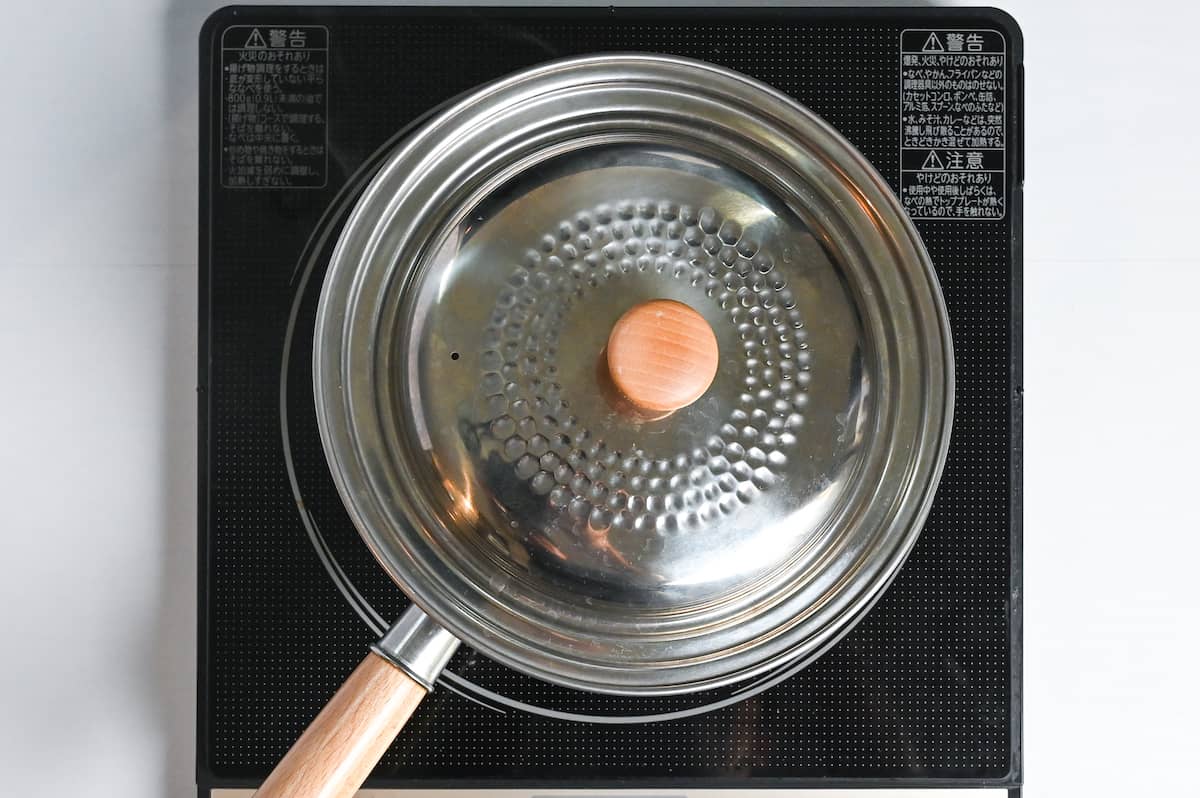
After 30 seconds, take off the lid and turn off the heat.
Rinse the cooked udon with hot water to remove any excess starch and divide them into serving bowls.
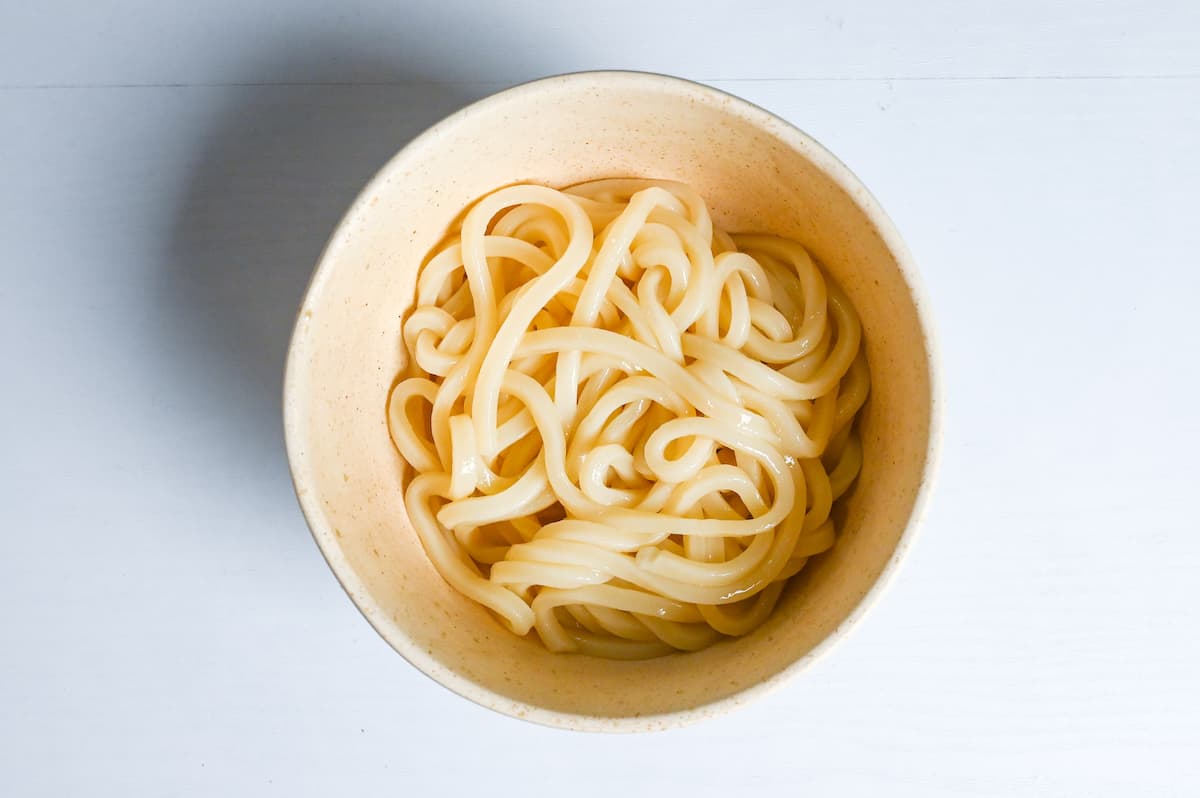
Fill each bowl with an equal amount of broth.

Top with sliced perilla leaves and the mentaiko you saved from earlier.
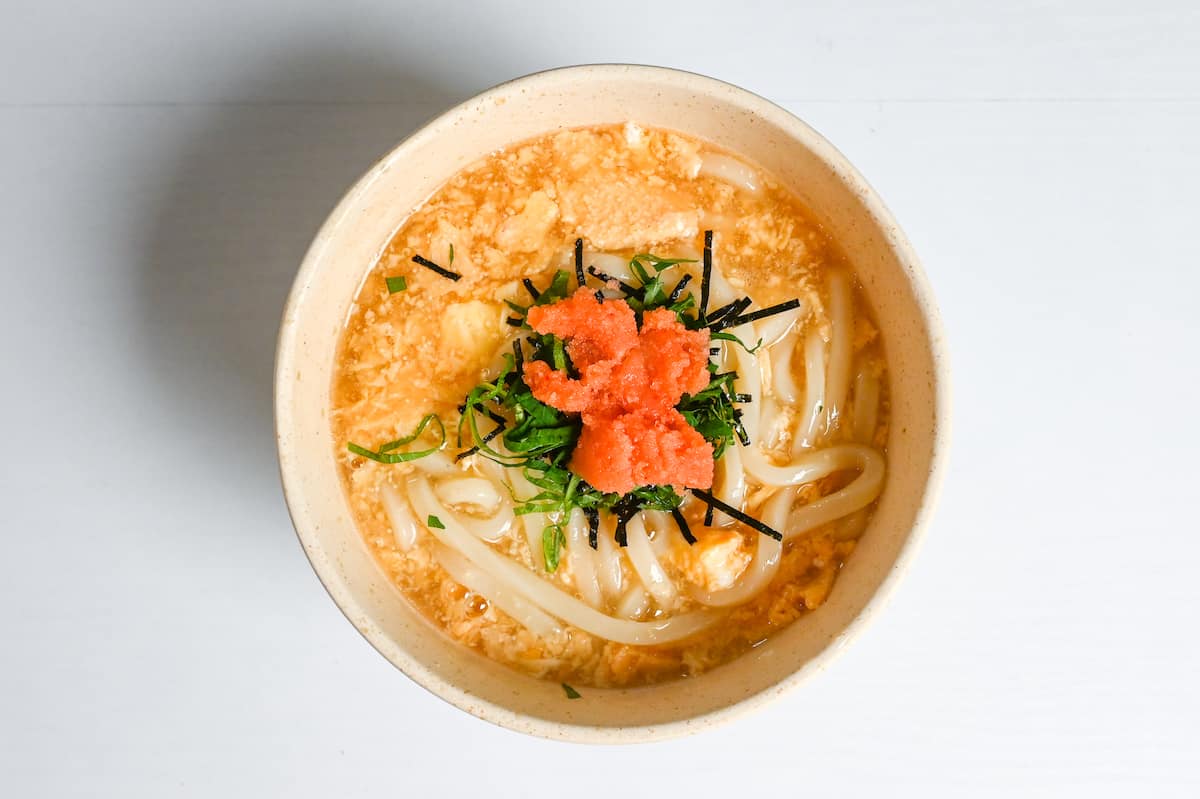
Enjoy!
Jump to Full Recipe Measurements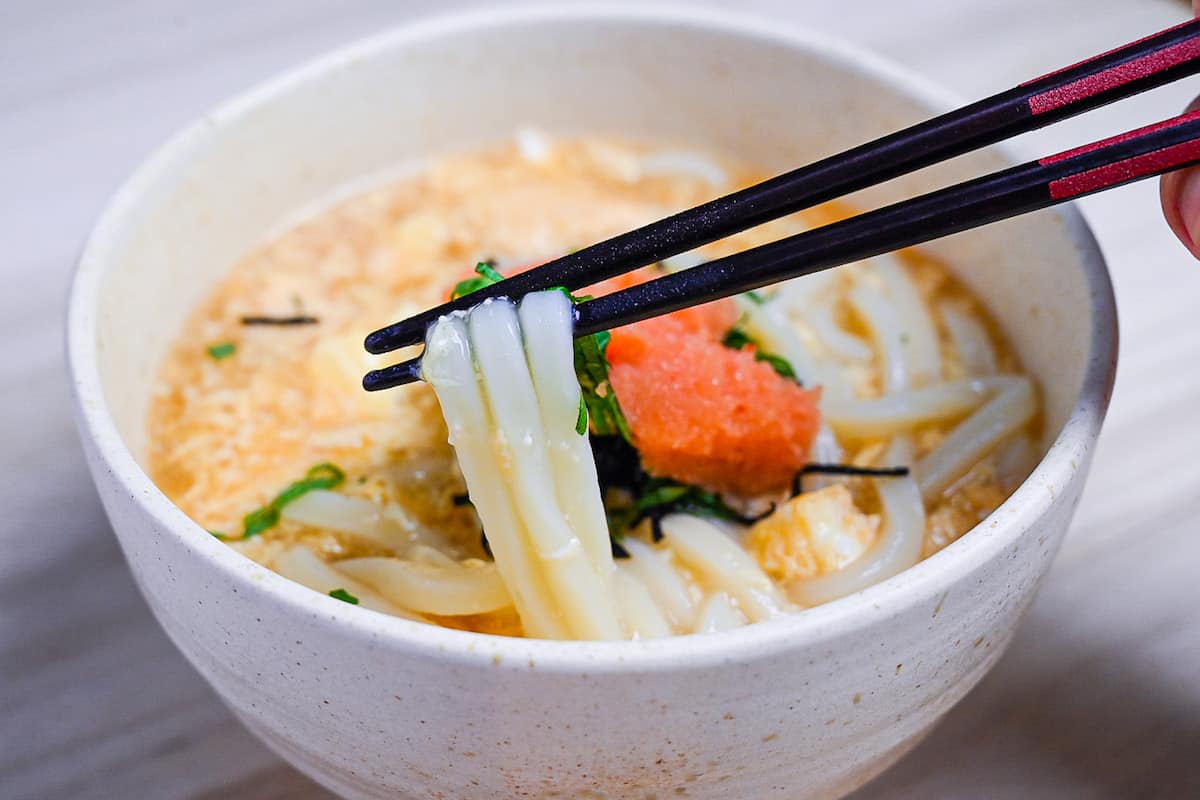
I hope you enjoy this Mentaiko Udon recipe! If you try it out, I’d really appreciate it if you could spare a moment to let me know what you thought by giving a review and star rating in the comments below. It’s also helpful to share any adjustments you made to the recipe with our other readers. Thank you!
More Japanese Udon Recipes
- Beef Udon Noodle Soup (Niku Udon)
- Japanese Curry Udon
- Kitsune Udon (Udon Noodles with Deep Fried Tofu)
- Oyako Udon (Chicken and Egg Udon Noodle Soup)
Want more inspiration? Explore my Udon Roundup Post for a carefully selected collection of tasty udon recipe ideas to spark your next meal!
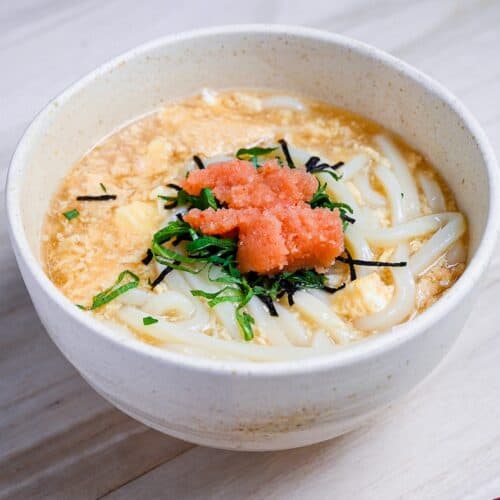
Mentaiko Udon (Cod Roe Ankake Udon)
Equipment
- Yukihira saucepan
Ingredients
- 3 portions udon noodles
- 100 g spicy cod roe (mentaiko) mentaiko
- 2 egg
- 500ml dashi stock check out how to make your own dashi stock here
- 2 tbsp sake
- 1 tbsp mirin
- 1 tsp sugar
- 1 tbsp Japanese light soy sauce (usukuchi shoyu)
- ½ tsp salt
- 1 tbsp potato starch (katakuriko)
- 1 tbsp cold water
- perilla leaves (shiso) 1-2 leaves per portion – optional
My recommended brands of ingredients and seasonings can be found in my Japanese pantry guide.
Can’t find certain Japanese ingredients? See my substitution guide here.
Instructions
- Cut the sac of 100 g spicy cod roe (mentaiko) lengthways, peel back the skin and scoop out the roe with a spoon. Set aside 1 tbsp per portion for garnish at the end.

- Mix 2 egg and the mentaiko in a bowl until well incorporated.

- In a saucepan, add 500ml dashi stock, 2 tbsp sake, 1 tbsp mirin, 1 tsp sugar, 1 tbsp Japanese light soy sauce (usukuchi shoyu) and ½ tsp salt. Bring to boil over medium heat.

- While you're waiting for the broth to boil, mix 1 tbsp potato starch (katakuriko) and 1 tbsp cold water in a small bowl to make a slurry. Cook 3 portions udon noodles in a separate pot according to the instructions on the packaging.

- Once the broth is boiling, turn the heat down to a simmer and add the slurry. When the broth has slightly thickened, pour in the whisked egg and mentaiko mix.

- Place a lid on the pan and simmer for 30 seconds.

- Turn off the heat and take off the lid.
- Rinse the udon with hot water to remove any excess starch and divide into serving bowls.

- Pour the broth equally into the bowls.

- Garnish with shredded perilla leaves (shiso) and the leftover mentaiko from earlier.

- Enjoy!



Leave a rating and a comment